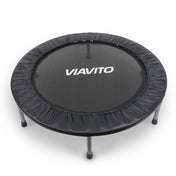Tennis, like most sports, has undergone major changes over the last 50 years based on changes in societal patterns and participation, emerging technology and further developments in the political and legislative environment.
With health and fitness exploits becoming more important to the general public (particularly over the last decade), changes in attitudes to nutrition, improvement in equipment development, as well as investment in grassroots sport, it is no wonder how this has filtered through to the sport of tennis.
Sweatband.com caught up with ex-professional and British number 1, Chris Wilkinson, to discuss the key changes that he has witnessed across his playing and punditry career, including equipment development, career longevity, data and playing style.
From wood to carbon
First on the list for Chris, was the rapid development of equipment.
Tennis rackets have changed a lot over the last 40-50 years. Players used to use wooden rackets and now they use Carbon/fibre and lighter technologies make them more powerful. As a result players are now able to hit the ball harder than in the past, in fact in the nineties the game became very powerful and serve orientated with less rallies especially at Wimbledon. Strings have been introduced and developed over this time also. Instead of using natural gut (made from sheep’s intestines), players are using monofilament polyester strings . At tournaments, the main players are using a fresh, restringed racket after every change of new balls, whereas we would make do with the same rackets for every match.
Fascinating fact is that Wimbledon in recent years have laid a different seed to the grass and slowed the speed of the court down. Many of the court surfaces now on the ATP and WTA Tour are a lot slower than they used to be which encourages longer rallies. In addition to this players are now fitter than before which also makes it more difficult for players to hit winners from the back of the court.
Fitness lengthening careers
We took the opportunity to delve deeper into Chris’ thoughts on player fitness.
Fitness in tennis has changed considerably over the years, it is now a key aspect for a player. 40-50 years ago fitness was not regarded as important as it is now, it was more about playing the game, now players need to be fitter than ever to succeed. The fitness levels of players have gone to a different level with Djokovic a great example of this. Most of the top players have a trainer that travels to tournaments with them. In some cases doctors and nutritionists make up the team entourage that accompany the players. Because players are fitter now, their careers are lasting longer. I retired at 29 and this in the Nineties seemed par for the course. Nowadays players are playing into their late thirties. Federer is now 39 years of age (40 in August ) and competing to a high level is a great example of improved fitness levels. Djokovic, Murray & Nadal are all into their mid 30's . Likewise, on the Ladies Tour where Venus and Serena Williams are still going strong well into their late 30's. The financial reward is obviously greater than in earlier decades which also allows a player to travel with a coach and fitness trainer which never happened years ago. It would still be good to see lower ranked players earning a better living in my opinion, as there is a bit of a gulf from top 100 ATP players to below the Top 100.
Data dictating the game
So what about the impact of statistics and data? Chris shared his thoughts.
Data and stats have also transformed the sport, there is now so much that a player can look at to develop his game and use to scout opponents, whilst gaining competitor intel. When I was playing, we never had data available. We simply had to work it out for ourselves as we played or watched a game. Hawkeye is used by many coaches and players to improve their tennis. Information a player might be looking for could be 1st serve %, where the opponent serves on big points, court positioning etc. There is so much detail on offer. If you have not played an opponent these days it is very easy to scout them by watching YouTube matches of them or other dedicated streaming websites. Many matches are now filmed even in the lower tier tournaments. Hawkeye is also used to help the Court Umpire with tight calls using technology linked to big screens . The ATP & WTA are slowly integrating this into all line calling rather than using line judges by using Infrared cameras linked to computers. Again these are all improvements being introduced in the last decade.
Changing styles
Chris rounded off his review by briefly focusing on the changes of playing style.Physiology and advances in sport science have led to stronger and more powerful tennis players. This has particularly been seen through the emergence of the Williams sisters within the women’s game. Paired with improvements in equipment, this has led to stronger all round tennis players, comfortable playing from the baseline.

